
Earl of Warwick is one of the most prestigious titles in the peerages of the United Kingdom. The title has been created four times in English history, and the name refers to Warwick Castle and the town of Warwick.

Earl of Macclesfield is a title that has been created twice. The first creation came in the Peerage of England in 1679 in favour of the soldier and politician Charles Gerard, 1st Baron Gerard. He had already been created Baron Gerard, of Brandon in the County of Suffolk, in 1645, and was made Viscount Brandon, of Brandon in the County of Suffolk, at the same time as he was given the earldom. These titles are also in the Peerage of England. Lord Macclesfield was the great-grandson of the distinguished judge Sir Gilbert Gerard, Master of the Rolls from 1581 to 1594. He was succeeded by his eldest son, the second Earl. He was involved in the Rye House Plot of 1683, was sentenced to death but later pardoned by the King. On his death without legitimate issue in 1701 the titles passed to his younger brother, the third Earl. He had earlier represented Yarmouth, Lancaster and Lancashire in the House of Commons. When he died in 1702 the titles became extinct.

Earl Talbot is a title that has been created twice in the Peerage of Great Britain. This branch of the Talbot family descends from the Hon. Sir Gilbert Talbot, third son of John Talbot, 2nd Earl of Shrewsbury. His great-great-great-grandson, the Right Reverend William Talbot, was Bishop of Oxford, of Salisbury and of Durham. His eldest son Charles Talbot was a prominent lawyer and politician. In 1733, he was raised to the Peerage of Great Britain as Lord Talbot, Baron of Hensol, in the County of Glamorgan, and then served as Lord High Chancellor of Great Britain from 1733 to 1737.

Earl of Chichester is a title that has been created three times in British history. The current title was created in 1801 for Thomas Pelham, 2nd Baron Pelham of Stanmer in the Peerage of the United Kingdom.
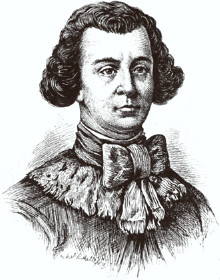
Earl of Limerick is a title that has been created twice in the Peerage of Ireland, associated first with the Dongan family, then with the Pery family.

Viscount Southwell, of Castle Mattress in the County of Limerick, is a title in the Peerage of Ireland. It was created in 1776 for Thomas Southwell, 3rd Baron Southwell. The Southwell family descends from Thomas Southwell. In 1662 he was created a Baronet, of Castle Mattress in the County of Limerick, in the Baronetage of Ireland. He was succeeded by his son, the second Baronet. He represented Limerick County in the Irish Parliament. In 1717 he was created Baron Southwell, of Castle Mattress, in the County of Limerick, in the Peerage of Ireland. His grandson was the aforementioned third Baron, who was elevated to a viscountcy in 1776. Before succeeded in the barony he had represented Enniscorthy in the Irish House of Commons. His great-grandson, the fourth Viscount, served as Lord Lieutenant of County Leitrim between 1872 and 1878. As of 2019 the titles are held by his great-great-grandson, the eighth Viscount, who succeeded his father in that year.

Viscount de Vesci, of Abbeyleix in the Queen's County, now called County Laois, is a title in the Peerage of Ireland. It was created in 1776 for Thomas Vesey, 1st Viscount de Vesci & 2nd Baron Knapton. The title Baron Knapton was created in the Peerage of Ireland in 1750 for the first Viscount's father, John Vesey, 1st Baron Knapton & 2nd Baronet, who had earlier represented Newtownards in the Irish House of Commons. The Baronetcy, of Abbeyleix in the Queen's County, was created in the Baronetage of Ireland on 28 September 1698 for the first Baron's father Reverend Thomas Vesey, Bishop of Killaloe (1713–1714) and Bishop of Ossory (1714–1730).
Viscount Hampden is a title that has been created twice, once in the Peerage of Great Britain and once in the Peerage of the United Kingdom. The first creation came in the Peerage of Great Britain when the diplomat and politician Robert Hampden, 4th Baron Trevor, was created Viscount Hampden, of Great and Little Hampden in the County of Bedford on 14 June 1776. The title of Baron Trevor, of Bromham, had been created in the Peerage of Great Britain in 1712 for his father, the lawyer Sir Thomas Trevor. Both titles became extinct in 1824 on the death of the first Viscount's second son, the third Viscount.

Baron Stanley of Alderley, in the County of Chester, is a title in the Peerage of the United Kingdom. It was created in 1839 for the politician and landowner Sir John Stanley, 7th Baronet. Upon his death in 1850, he was succeeded as 2nd Baron Stanley of Alderley and 8th Baronet of Alderley Hall by his son Edward, who was a prominent Liberal politician and notably served as President of the Board of Trade, Postmaster General and had in 1848 been created Baron Eddisbury, of Winnington in the County Palatine of Chester, in his own right. His wife Henrietta was a prominent campaigner for women's education. After his death, the Stanley of Alderley and Eddisbury baronies remained united; most holders have since chosen to be known as Lord Stanley of Alderley. The 3rd Baron Stanley of Alderley had a career in the Diplomatic Service; as he was childless he was succeeded by his younger brother, the 4th Baron. He was Liberal Member of Parliament for Oldham. In 1909, the 4th Baron Stanley of Alderley acquired a further title when he succeeded his first cousin once removed, the Earl of Sheffield, according to a special remainder and thus inherited the title of 4th Baron Sheffield. After his death the titles passed to his son, the 5th Baron Stanley of Alderley. He was Liberal Member of Parliament for Eddisbury and also served as Governor of Victoria. His eldest son, the 6th Baron Stanley of Alderley, sold the family seat of Alderley Hall in 1938. He was married four times, the second time to Sylvia Ashley. On his death the titles passed to his younger brother, who preferred to be known as Lord Sheffield. He only held the titles for three months. As of 2013 the titles are held by the latter's cousin, the 9th Baron Stanley of Alderley, who succeeded his father in that year. He is the grandson of Oliver Hugh Stanley, youngest son of the 4th Baron.
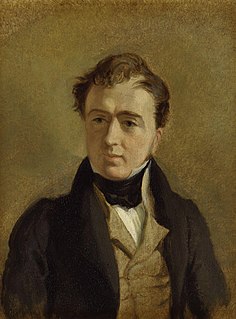
Baron Northbrook, of Stratton in the County of Southampton, is a title in the Peerage of the United Kingdom. It was created in 1866 for the Liberal politician and former Chancellor of the Exchequer, Sir Francis Baring, 3rd Baronet. The holders of the barony represent the genealogically senior branch of the prominent Baring family. The name Northbrook is derived from a tithing of the local parish.
Baron Bruntisfield, of Boroughmuir in the City of Edinburgh, is a title in the Peerage of the United Kingdom. It was created in 1942 for the Scottish Conservative politician and former Vice-Chamberlain of the Household, Sir Victor Warrender, 8th Baronet. The Warrender family descends from George Warrender. He was Lord Provost of Edinburgh and represented Edinburgh in Parliament. In 1715 he was created a baronet, of Lochend in the County of Haddington, in the Baronetage of Great Britain. His grandson, the third Baronet, fought at the Battle of Minden in 1759, represented Haddington Burghs in the House of Commons and served as King’s Remembrancer of the Court of Exchequer from 1771 to 1791. He was succeeded by his son, the fourth Baronet. He sat as a Member of Parliament for Haddington Burghs, Truro, Sandwich, Westbury and Honiton and notably served as a Lord of the Admiralty from 1812 to 1812. In 1822 Warrender was admitted to the Privy Council. On his death the title passed to his younger brother, the fifth Baronet. His grandson, the seventh Baronet, was a Vice Admiral in the Royal Navy. He was succeeded by his son, the eighth Baronet, who was raised to the peerage as Baron Bruntisfield, of Boroughmuir in the City of Edinburgh, in 1942. As of 2010 the titles are held by the latter's grandson, the third Baron, who succeeded in 2007. He is a retired officer in the British Army and investment banker.

Viscount Grandison, of Limerick, is a title in the Peerage of Ireland. It was created in 1620 for Sir Oliver St John, the Lord Deputy of Ireland. He was the descendant and namesake of Oliver St John, whose elder brother Sir John St John was the ancestor of the Barons St John of Bletso and the Earls of Bolingbroke. Moreover, St John's nephew Sir John St John, 1st Baronet, of Lydiard Tregoze, was the ancestor of the Viscounts Bolingbroke and the Viscounts St John.
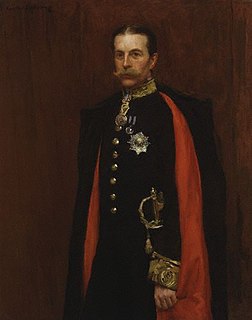
Marquess of Crewe was a title in the Peerage of the United Kingdom. It was created in 1911 for the Liberal statesman Robert Crewe-Milnes, 1st Earl of Crewe. He had already been created Earl of Crewe, of Crewe, Cheshire, in 1895, and was made Earl of Madeley, in Staffordshire, at the same time as he was granted the marquessate. These titles were also in the Peerage of the United Kingdom. Lord Crewe was the only son of the noted Victorian literary personage Richard Monckton Milnes. The latter had been raised to the Peerage of the United Kingdom as Baron Houghton, of Great Houghton in the West Riding of the County of York, in 1863. Lord Houghton married the Honourable Annabella, daughter of John Crewe, 2nd Baron Crewe. Their son, the second Baron, succeeded to the Crewe estates on the death of his maternal uncle Hungerford Crewe, 3rd Baron Crewe, in 1894. Lord Crewe's two sons both predeceased him and the titles became extinct on his death in 1945.

Earl of Pomfret was a title in the Peerage of Great Britain created in 1721 for Thomas Fermor, 2nd Baron Leominster. It became extinct upon the death of the fifth earl in 1867.
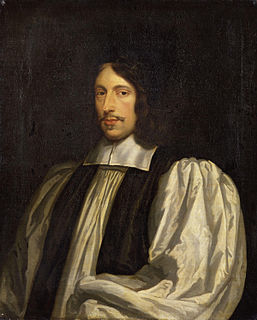
Nathaniel Crew, 3rd Baron Crew was Bishop of Oxford from 1671 to 1674, then Bishop of Durham from 1674 to 1721. As such he was one of the longest serving bishops of the Church of England.
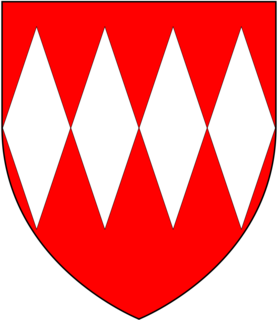
Baron Carteret is a title that has been created twice in British history, once in the Peerage of England and once in the Peerage of Great Britain. The first creation came into the Peerage of England in 1681 when the fourteen-year-old Sir George Carteret, 2nd Baronet, was made Baron Carteret, of Hawnes in the County of Bedford. The peerage was originally proposed for his grandfather Sir George Carteret, 1st Baronet, a celebrated royalist statesman, but he died before he was granted the title and as his eldest son, Philip, predeceased him, it was eventually bestowed on his grandson, George, with remainder to the latter's brothers. The Baronetcy, of Metesches in the Island of Jersey, had been created for George Carteret in the Baronetage of England on 9 May 1645. Lord Carteret married Lady Grace Granville, daughter of John Granville, 1st Earl of Bath. In 1715 Lady Grace was raised to the Peerage of Great Britain in her own right as Viscountess Carteret and Countess Granville. Lord Carteret and Lady Granville were both succeeded by their son John Carteret, the second Baron and second Earl. The titles became extinct on the death of the latter's son Robert Carteret, the third Earl, in 1776.
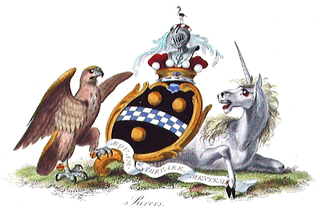
Baron Rivers was a title that was created four times in British history, twice in the Peerage of England, once in the Peerage of Great Britain and once in the Peerage of the United Kingdom.

Baron Crewe, of Crewe in the County of Chester, was a title in the Peerage of the United Kingdom. It was created on 25 February 1806 for the politician and landowner John Crewe, of Crewe Hall, Cheshire. This branch of the Crewe family descended from Sir Ranulph Crewe (1558–1646), Speaker of the House of Commons and Lord Chief Justice of the King's Bench. He was the brother of Sir Thomas Crewe, also Speaker of the House of Commons and the father of John Crew, 1st Baron Crew. Sir Ranulph's grandson John Crewe was the father of Ann Crewe, who married John Offley, of Madeley Manor, Staffordshire. Their son John assumed by Act of Parliament the surname of Crewe in lieu of his patronymic in 1708. He sat as a Knight of the Shire for Cheshire. His son John Crewe also represented Cheshire in Parliament. The latter was the father of the first Baron Crewe. Lord Crewe died in 1829 and was succeeded by his son, the second Baron. He was a General in the British Army. The title became extinct on the death of his son, the third Baron, in 1894.
There have been two baronetcies created for people with the surname Heathcote, both in the Baronetage of Great Britain and both created in 1733. The holders of the first creation were later elevated to the peerage as Baron Aveland and Earl of Ancaster, which titles are now extinct. However, both baronetcies are extant as of 2008.

Thomas Crew, 2nd Baron Crew of Steane, Northamptonshire was an English politician who sat in the House of Commons at various times between 1654 and 1679, when he inherited the peerage Baron Crew.














